China In Arms BOOKSTORE and GIFT SHOP!
Follow on Twitter
Subscribe: $5 Month/$50 Annual (unable to secure a subscription contact the bank for permission for Stripe deposits).
Note to Reader: This post was picked up by Taiwan’s United Daily News and TVBS on July 11, 2022.
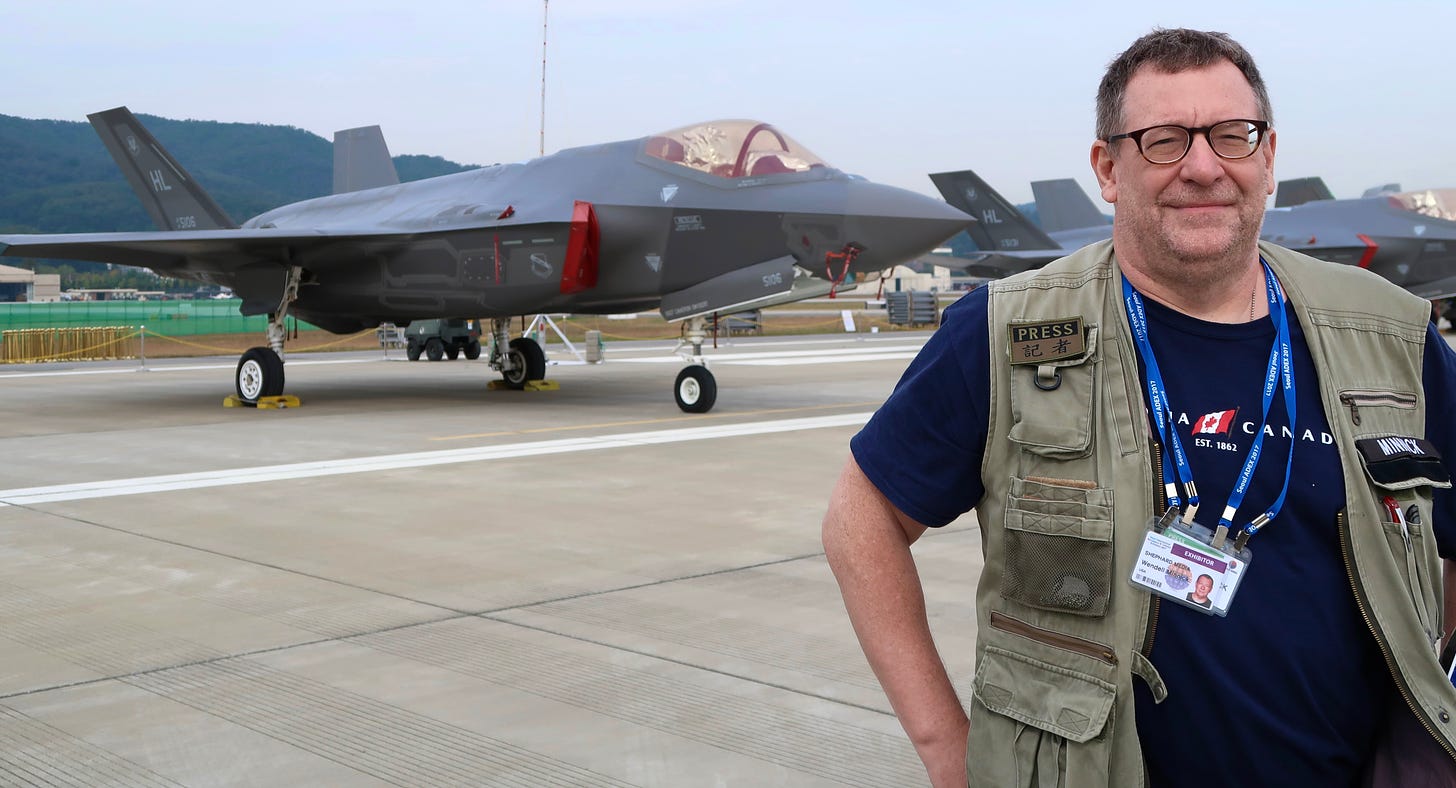
29 June 2022
Why F-35s Don’t Matter for Taiwan
Taiwan’s disastrous F-35 dream
By Wendell Minnick (Whiskey Mike)
TAIPEI - Let’s wind the clock back all the way to the 1995-1996 Taiwan Strait Missile Crisis, when China launched ballistic missiles around the island of Taiwan in an act of coercion and a show of strength.
The ten Dong Feng 15 (M-9) short-range ballistic missiles (SRBM) that landed around Taiwan, some as close as 20 nautical miles south of Kaohsiung Naval Base and 18 nautical miles north of Keelung Port, are now primitive in respect to the China’s new precision strike weapons.
Author’s collection. Commemorating the 25th anniversary of the 1995-1996 Taiwan Strait Crisis of March 8th 1996. Often dubbed the Third Taiwan Strait Crisis (July 21, 1995 to March 23, 1996). The US sent two aircraft carrier groups to the area in response to Chinese short-range ballistic missile tests (DF-15/M-9). The patch only mentions ships listed for the March 8th missile launch: CVA-62 USS Independence, CG-52 USS Bunker Hill, DD-975 USS O’Brien, DD-966 USS Hewitt, and the FFG-41 USS McClusky.
For China, the U.S. reaction to the exercise came as a shock. Beijing had assumed that the U.S. would do nothing to protect Taiwan. Since 1979, there had been no military exchanges between Taipei and Washington.
Beijing declared that it would never allow the U.S. military to operate freely in defense of Taiwan.
Confirmation came to that promise in 2014 when China unveiled the submarine-launched CM-708UNA anti-ship cruise missile (See Chinese Air-Launched Weapons and Surveillance, Reconnaissance and Targeting Pods, Chinese Cruise Missiles, and Chinese Submarines and Underwater Warfare Systems).
Then in 2015, China confirmed the existence of a 4,000-kilometer range DF-21D anti-ship ballistic missile (“carrier killer”).
Submarine-launched CM-708UNA anti-ship cruise missile unveiled at the 10th China Airshow in Zhuhai (2014). Author Photo.
Even though China only had 300 SRBMs during the 95-96 Crisis, Taiwan knew that in time China would develop improved precision guided missiles capable of multi-directional saturation strikes on air bases.
And over time, they were correct, as the number grew from 300 to 1,300 SRBMs, not including the medium-range ballistic missiles (DF-16) and more cruise missiles than chopsticks, to pulverize Taiwan’s airbases. There was also the development of not just missiles, but rockets capable of hitting Taiwan.
At the time of the Crisis, Taiwan had a requirement to replace its ageing F-5 Tiger fighters and eventually the Mirage 2000 fighters, but Washington dismissed requests for new F-16C/D Block 50/52 fighters.
Instead, in 2016, the U.S. released an upgrade program for the older F-16A/B Block 20 fighters. Taipei agreed, but continued pushing for new F-16s to maintain the air force’s fleet and serve as an interim fighter to the eventual procurement of Taipei’s ultimate dream: Lockheed’s F-35 stealth fighter. Going so far as issuing a patch in support of the procurement.
Due to China’s military modernization, Taiwan concluded quickly that it needed a fighter capable of operating on make-shift runways or no runways at all. The requirement had only two possible solutions: vertical and/or short take-off and landing (V/STOL) or a short take-off and landing (STOL) aircraft.
There was talk in Taiwan defense circles of procuring refurbished U.S. Marine Corps AV-8 Harrier V/STOL attack aircraft after the U.S. replaced them with the F-35B STOVL, but the Harriers were subsonic and designed for ground attack missions. Even if refurbishment was affordable, the AV-8s were also determined too costly in follow-on maintenance and support.
Taiwan has not had aerial combat experience since the joint Saudi-Taiwan Great Desert Program. From 1979-1991, Taiwan sent ten contingents of F-5 fighter pilots to southern Saudi Arabia to fly missions to support North Yemen. Taiwan pilots attacked ground targets in South Yemen and got into dogfights with Cuban pilots in Russian MiG-17 fighter jets.
Since then, the F-5s have been moved to Taitung Air Base to serve as training aircraft. Taiwan secured 150 F-16A/B fighters in the 1990s. An ongoing training program at Luke Air Force Base in Arizona provides significant training for Taiwan’s 21st Fighter Squadron, the Gamblers. [Note: since this article was published, training was moved in 2023 to Morris Air National Guard Base, Tucson, Arizona; See this updated article].
Then in 2019, after two decades of pleading with the U.S. for new F-16s, the Trump administration released 66 new F-16V fighters. The question remains, will it matter this late in the game? Or were the F-35s the only aircraft capable of giving Taiwan a little more time to fend off China?
In 2002, Taiwan sent a formal Letter of Intent (LOI) for Price and Availability (P&A) Data for 100 F-35B aircraft.
The three-page letter below was sent from the Washington office of the Defense Procurement Division at the Taipei Economic and Cultural Representative Office (TECRO) to the Director of Political/Military Affairs at the American Institute in Taiwan (AIT) in Washington:
Above: Page 1 of 3 of Letter of Intent for Price and Availability Data.
Above: Page 2 of 3 of Letter of Intent for Price and Availability Data.
Above: Page 3 of 3 of Letter of Intent for Price and Availability Data.
Further efforts were made In 2004, when a private briefing was given on Taiwan’s requirement for 60 F-35B and 150 F-35A conventional takeoff and landing (CTOL) fighters. The page that details the “distressed environment” will give you insights on the problematic air power competition Taiwan faces. This briefing was supplied to China In Arms by a confidential source:
Failure by the U.S. and Taiwan to secure the F-35 resulted in what today can be described as leading to the final stage of Chinese air domination.
The stealthy F-35, it was assumed, would provide Taiwan additional defenses the F-16 lacked. However, China began developing anti-stealth technology with unique radars and electronic warfare systems capable of detecting and destroying stealth aircraft, like the F-22 Raptor and F-35.
The below patch is for the Chinese air force unit dedicated to this program, as it is obvious from the Northrop B-2 Bomber highlighted on the patch. China has over ten systems for finding and destroying stealth aircraft, making the days of stealth supremacy difficult to maintain (See Chinese Radar, Chinese C4I/EW Vol. 1, Chinese C4I/EW Vol. 2, and Chinese Land-based Air Defense Systems).
Chinese Air Force Unit patch dedicated to anti-stealth technology. Note the U.S. B-2 stealth bomber in the crosshairs. There is no ambiguity in China’s military modernization efforts. Compare this to the U.S. policy of strategic ambiguity.
In 2005, China finally established Air Parity with Taiwan. Where no side held any level of control, later China slowly reached the status of Favorable Air Situation, where Beijing had limited air superiority depending on conditions. And now, China has Air Superiority which is evident from the Martin-Vezian map below. Next is Air Supremacy where China holds complete control of the skies over Taiwan.
These are like the four stages of cancer. Taiwan is basically in the third stage, what doctors call metastasized cancer. There is no reversal. No hand of God to save you.
Taiwan’s Ministry of National Defense (MND) often releases maps of Chinese intrusions into Taiwan’s Air Defense Identification Zone (ADIZ). The narrative is always the South China Sea, with little or no mention of the East China Sea. Why? It is unclear.
The MND never shows anything close to the map below, produced by Louis Martin-Vezian, demonstrating Chinese intrusions in a 30 day period (1 September to 4 October 2021).
China is slowly boxing Taiwan in like some kind of manic robot spider. This map is like a doctor’s X-ray of stage three cancer:
Map printed with permission for China In Arms by Louis Martin-Vezian.
How soon before China attains stage four - Air Supremacy? How long before China declares Checkmate?
Please consider these books:
Chinese Air-Launched Weapons & Surveillance, Reconnaissance and Targeting Pods (2019)
Chinese C4I/EW (Vol. 1) (2022) Volume 1.
Chinese C4I/EW (Vol. 2) (2022) Volume 2.
Chinese Fixed-Wing Unmanned Aerial Vehicles (2016) Note this is Volume 1.
Chinese Rocket Systems: Multiple Launch Rocket Systems (2016)
Chinese Rotary/VTOL Unmanned Aerial Vehicles (2016) Volume 1.
Chinese Seaplanes, Amphibious Aircraft and Aerostats/Airships (2016)
More Chinese Fixed Wing UAVs (2019) Volume 2.
More Chinese Rotary & VTOL UAVs (2019) Volume 2.




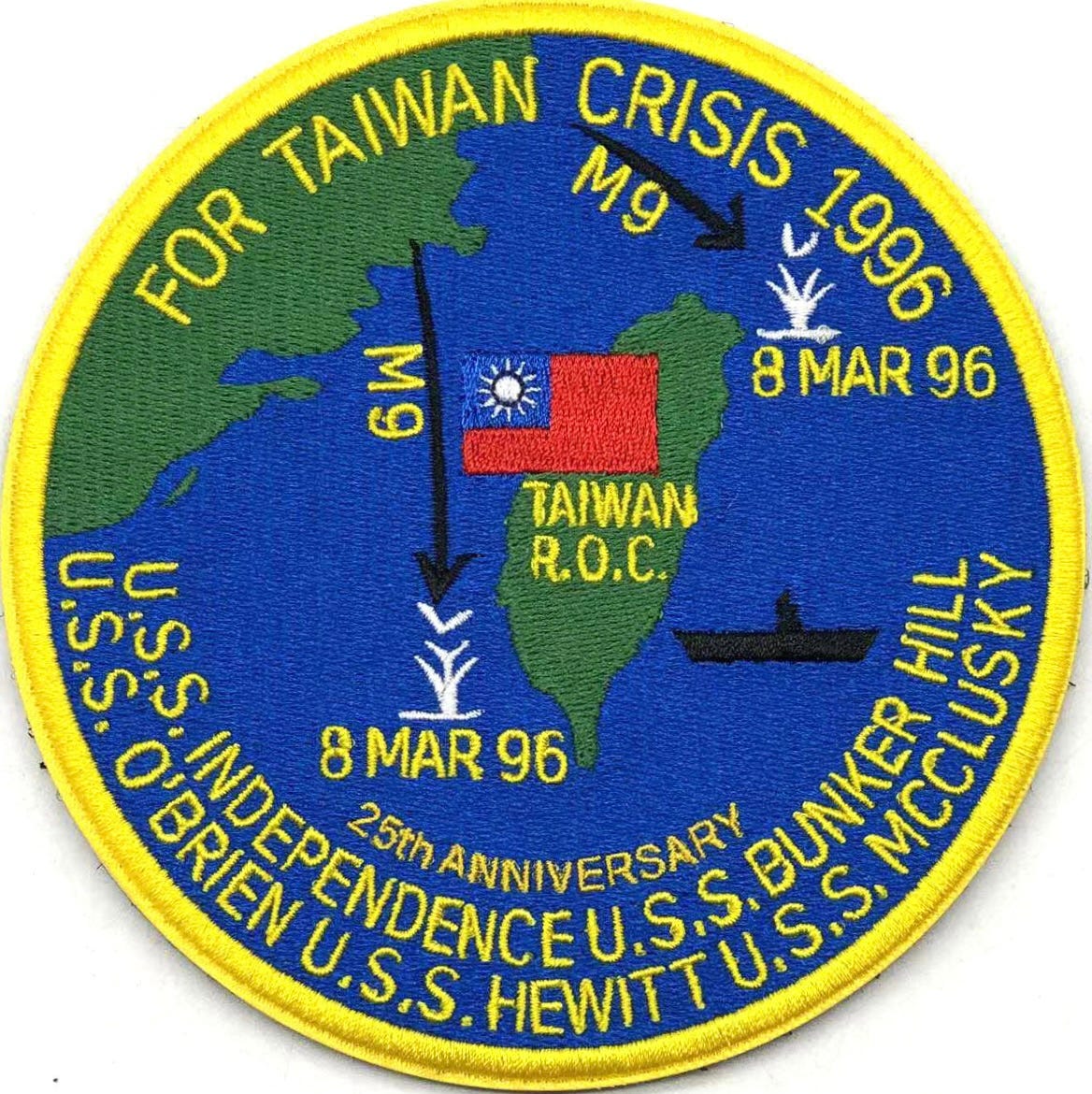
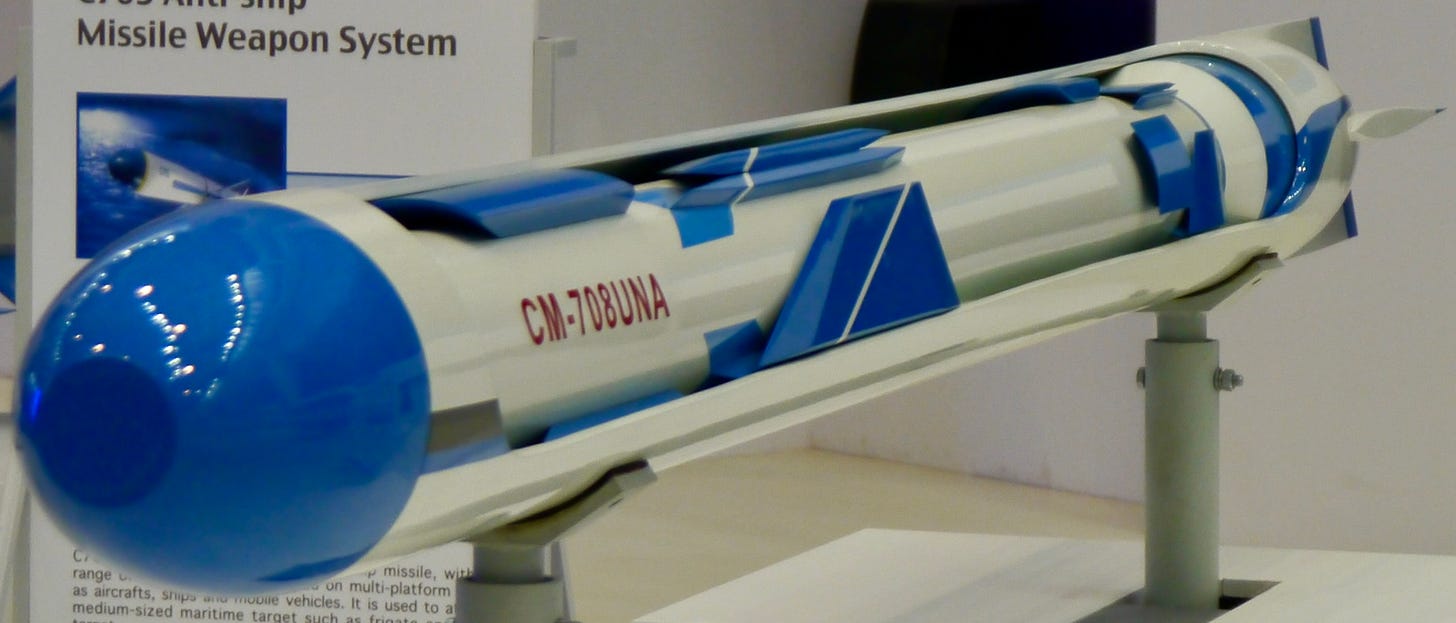
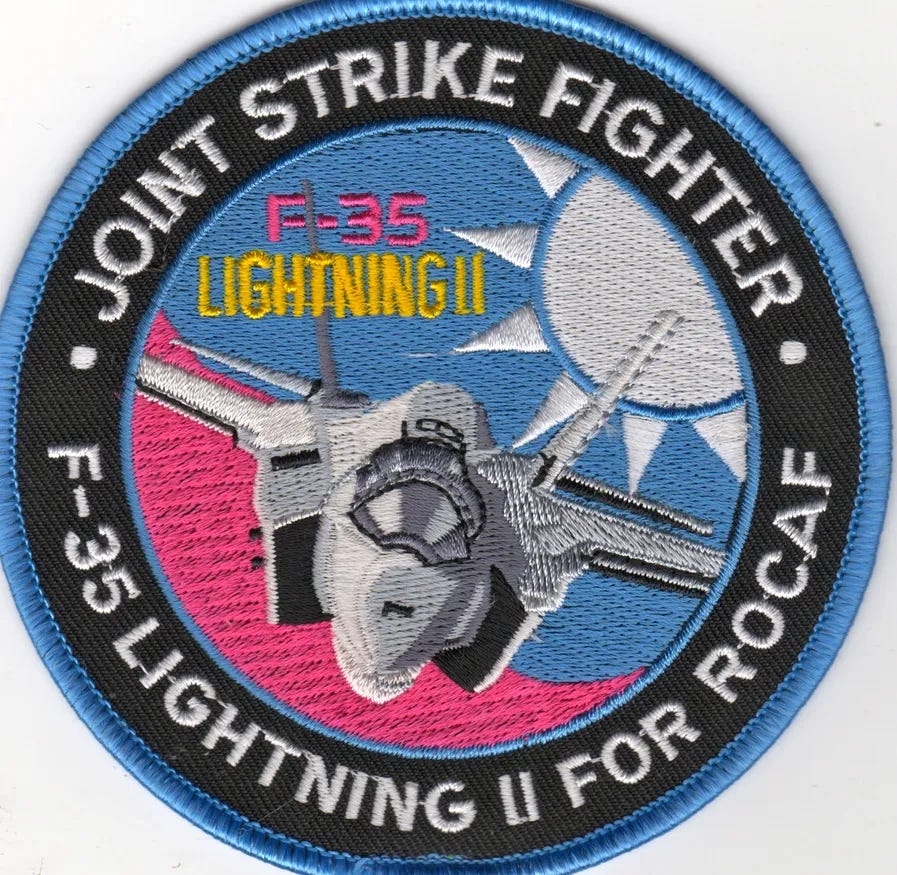
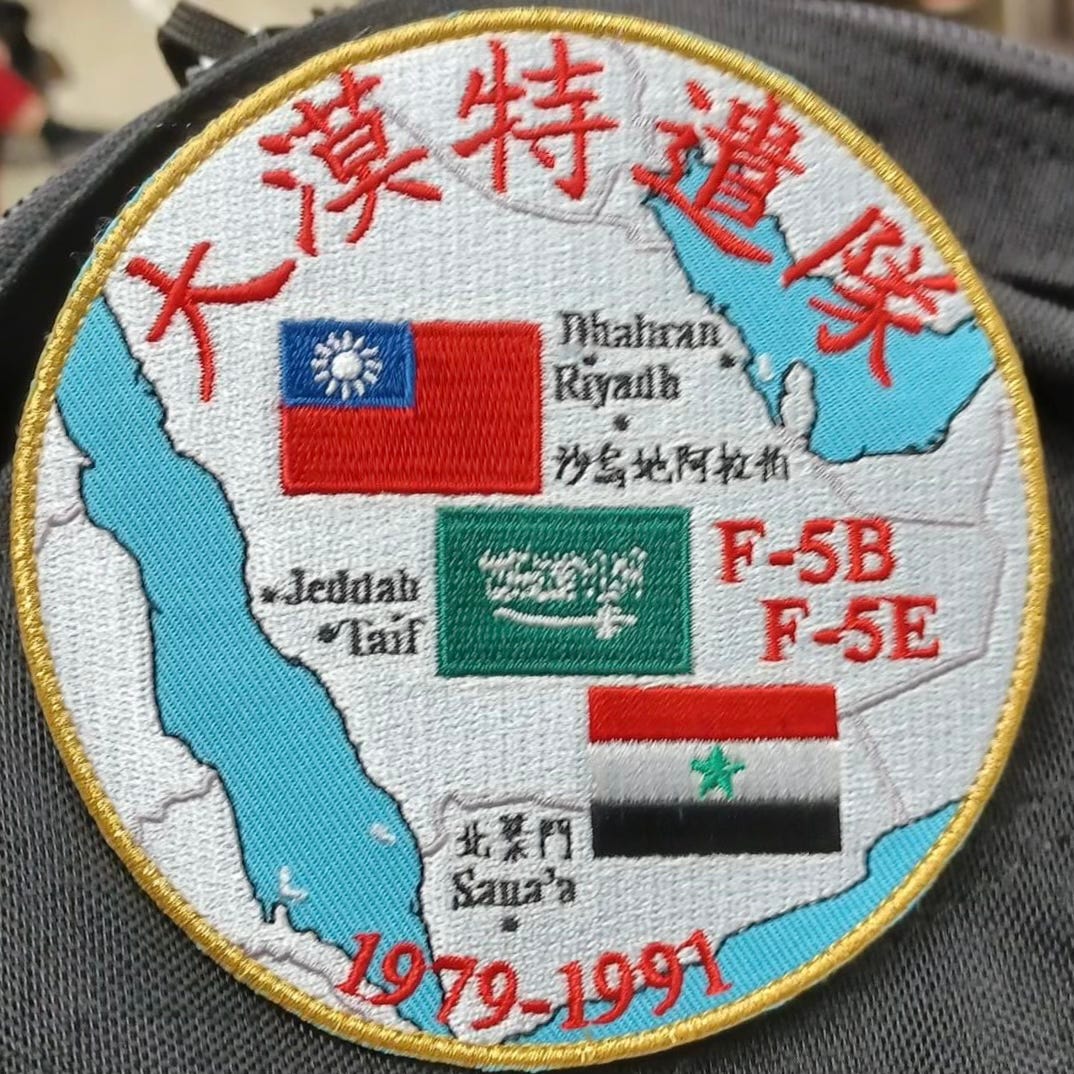
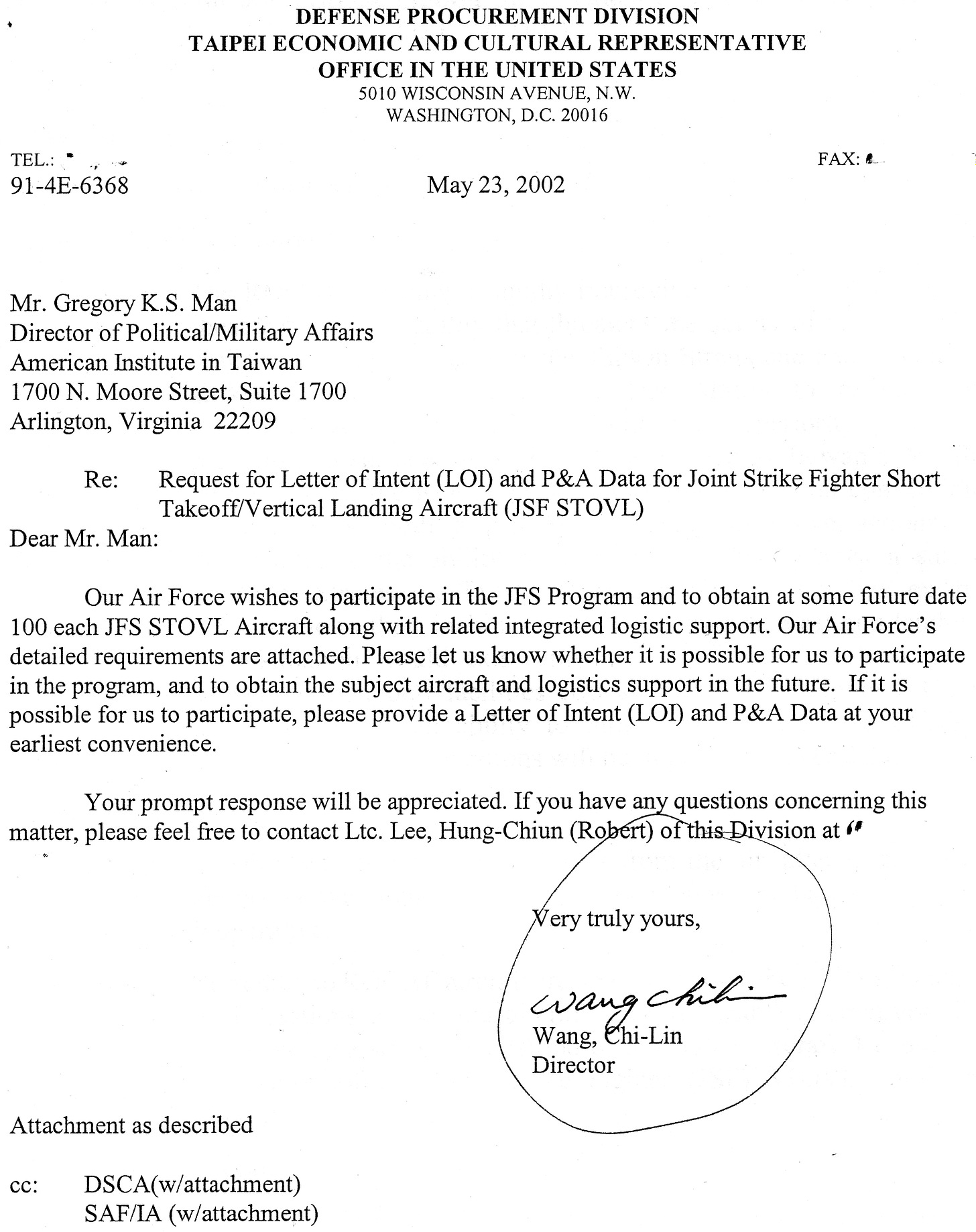
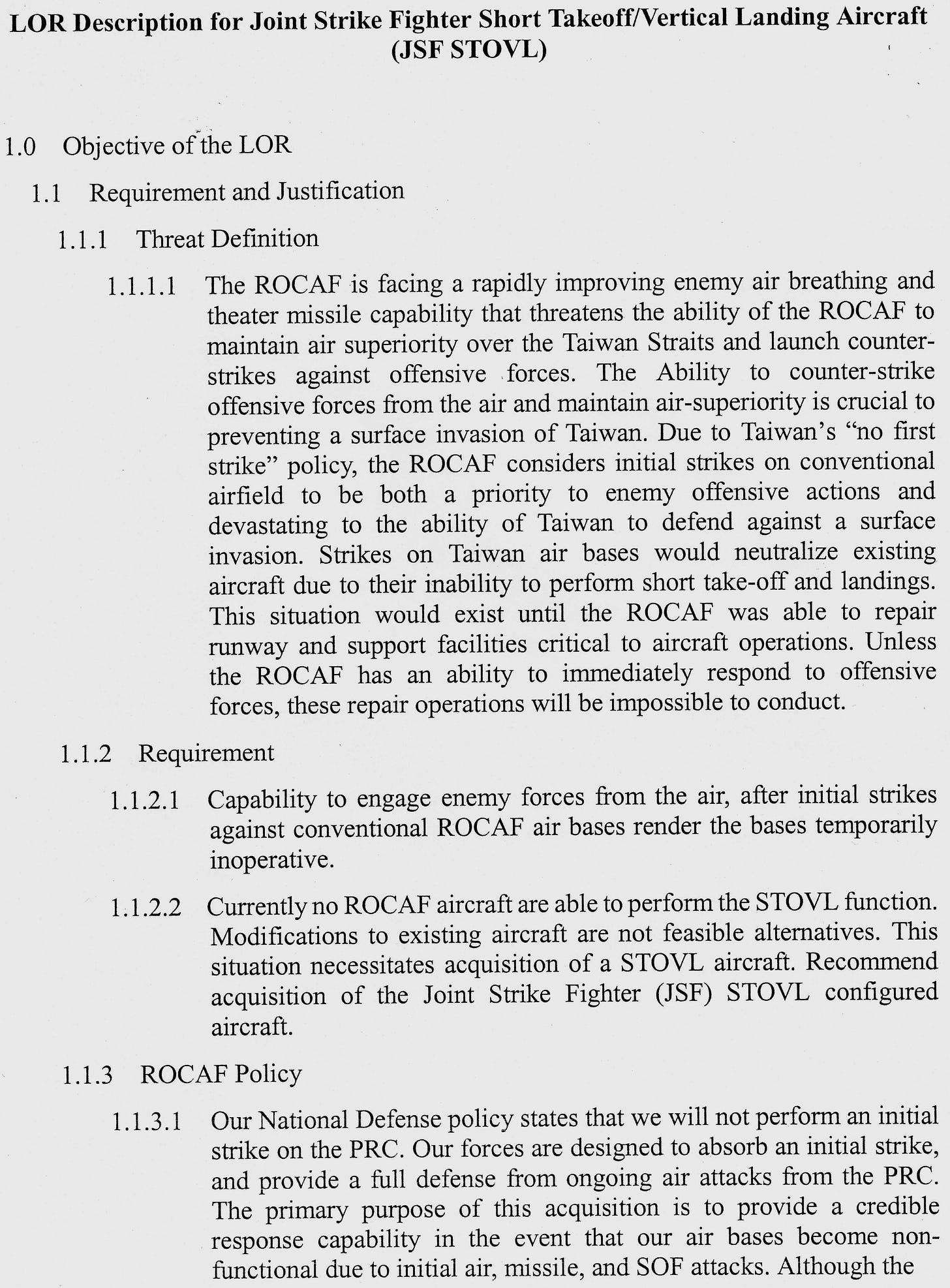
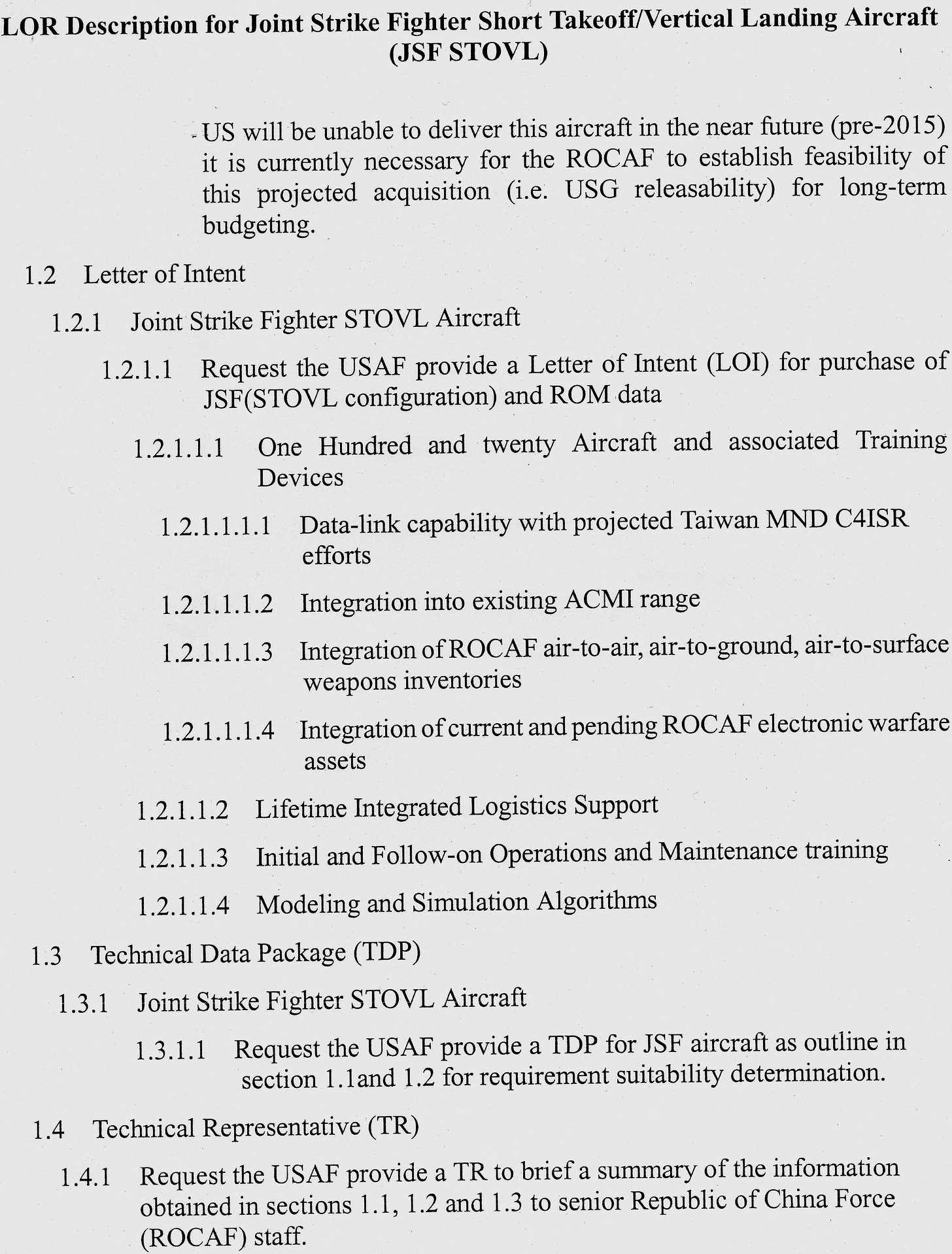
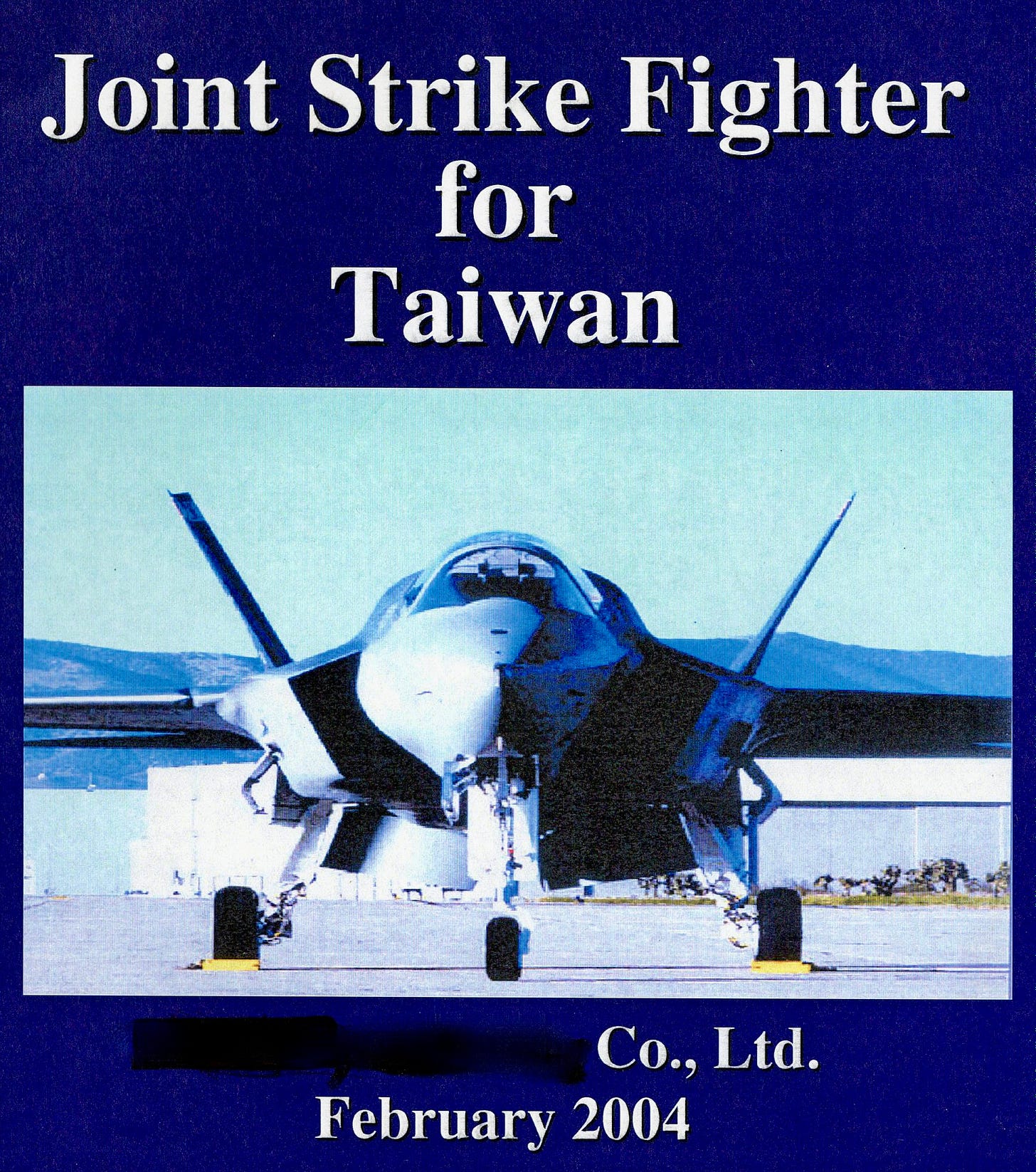
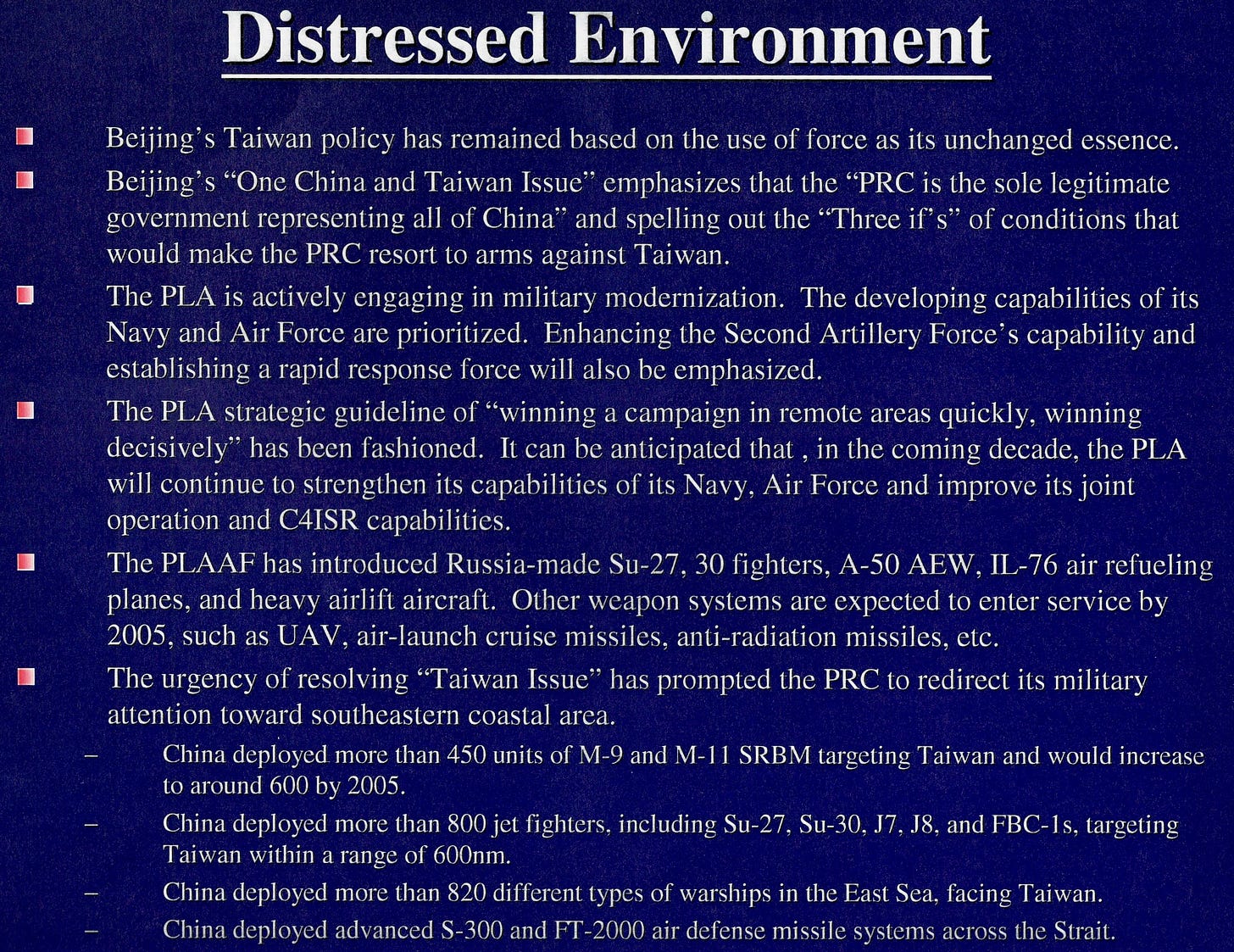
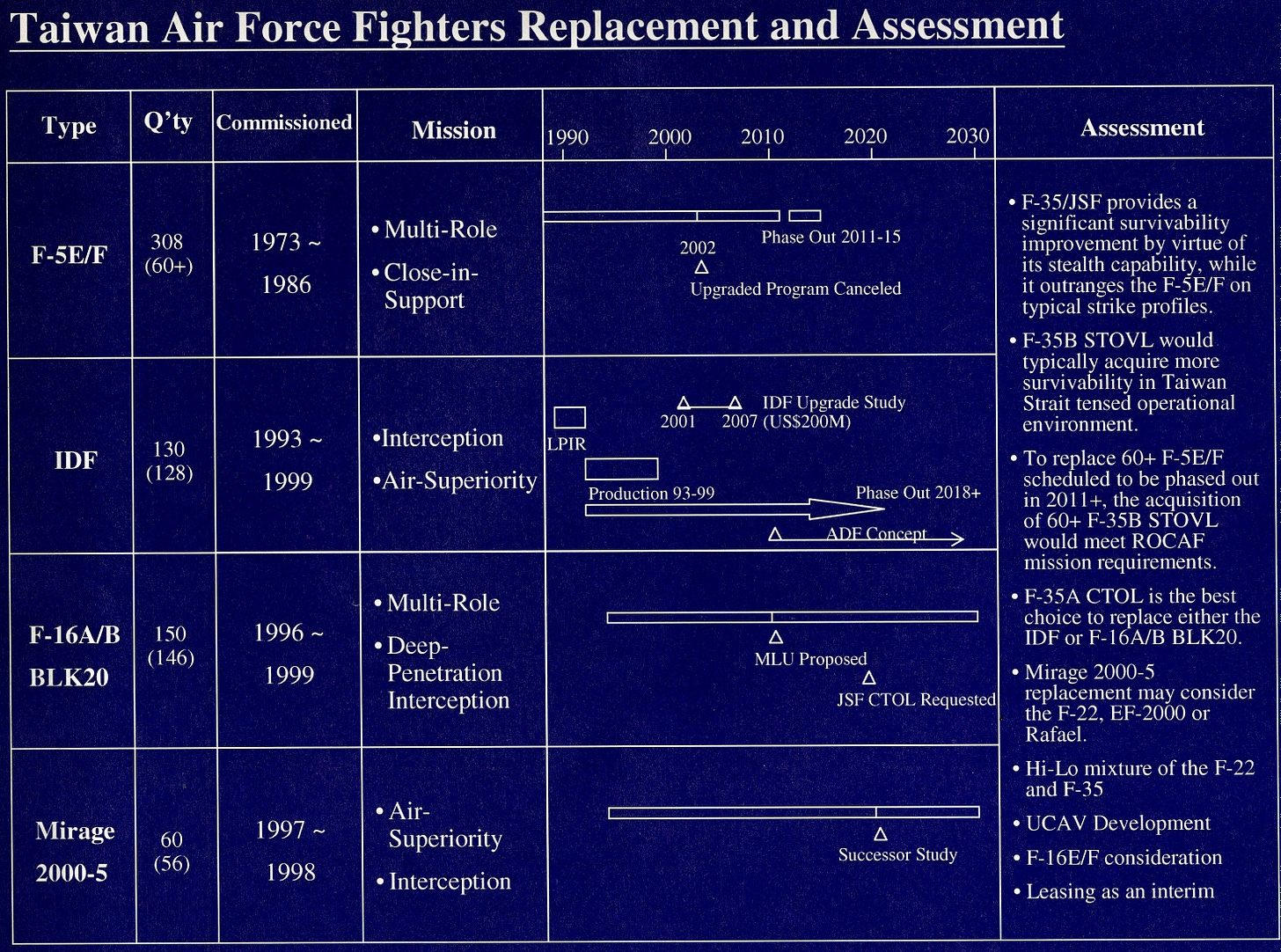
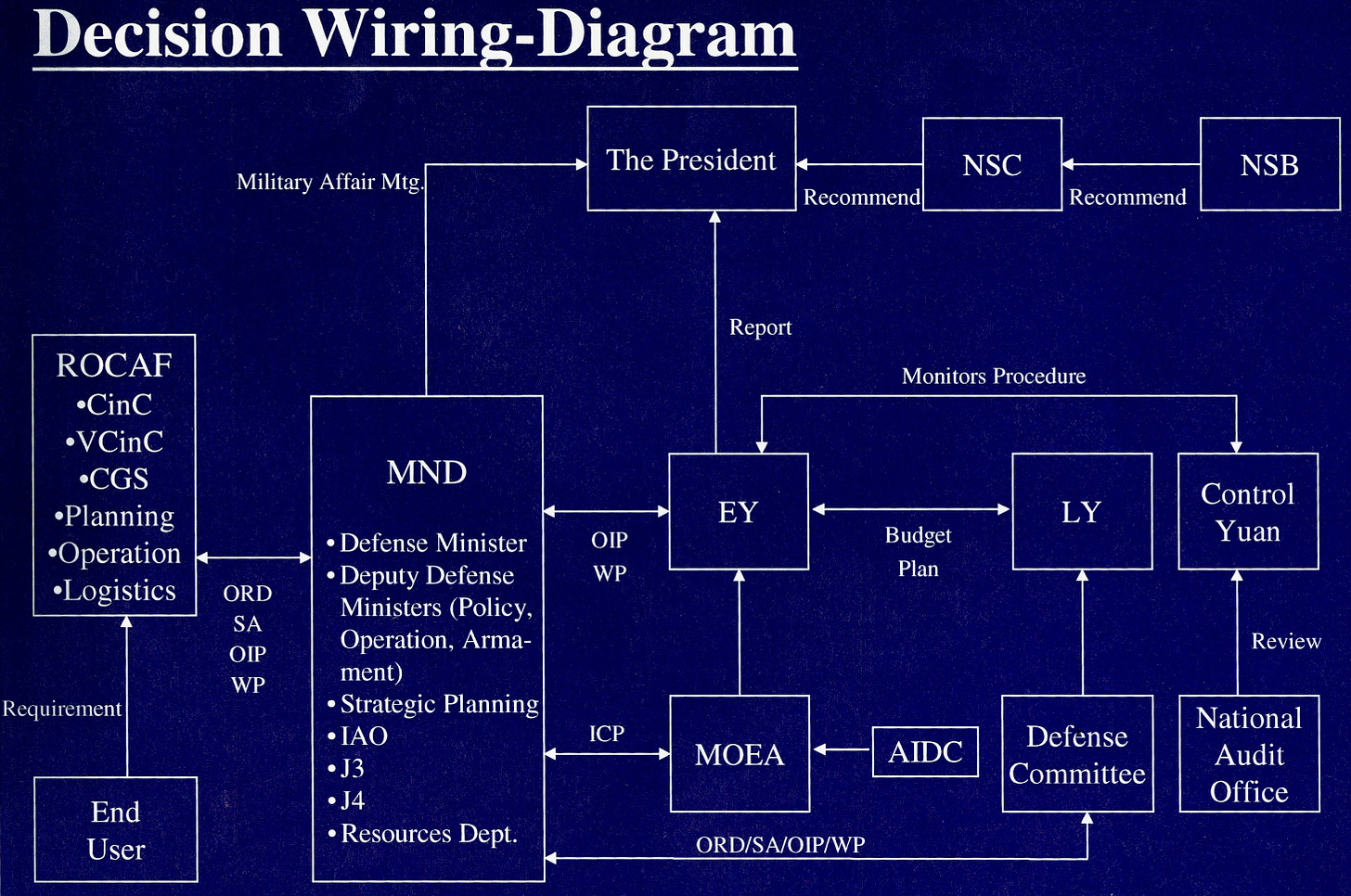
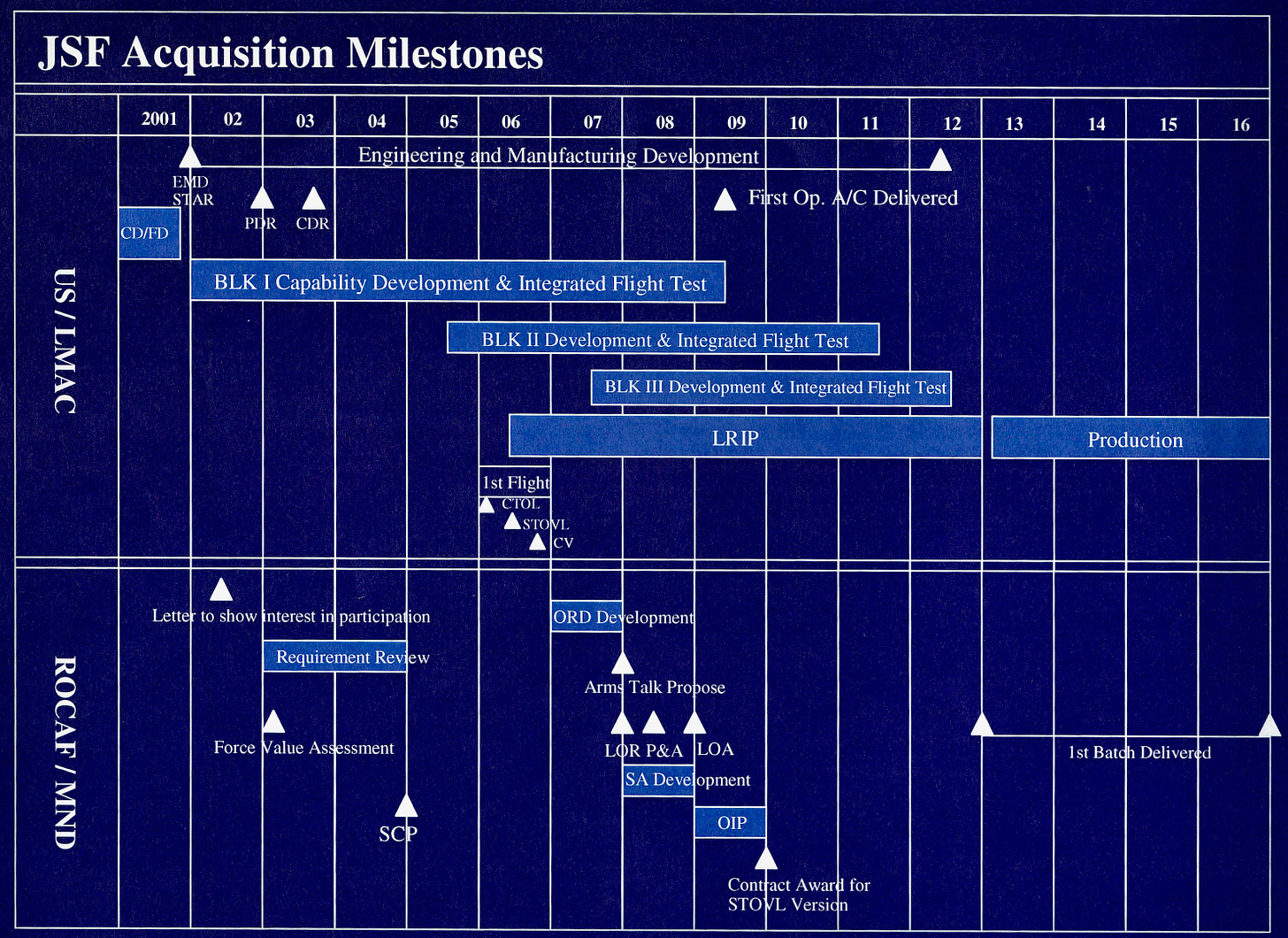
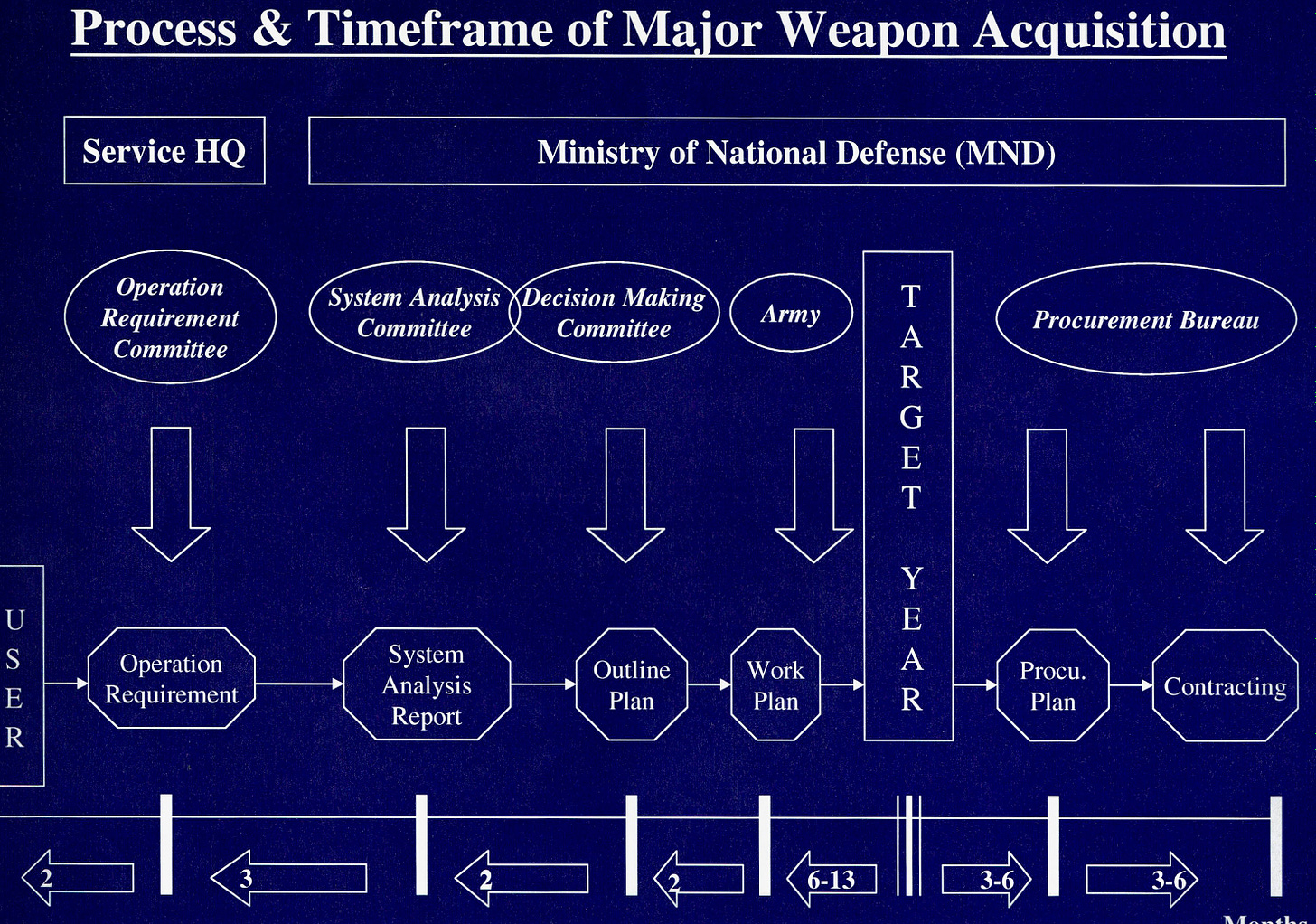
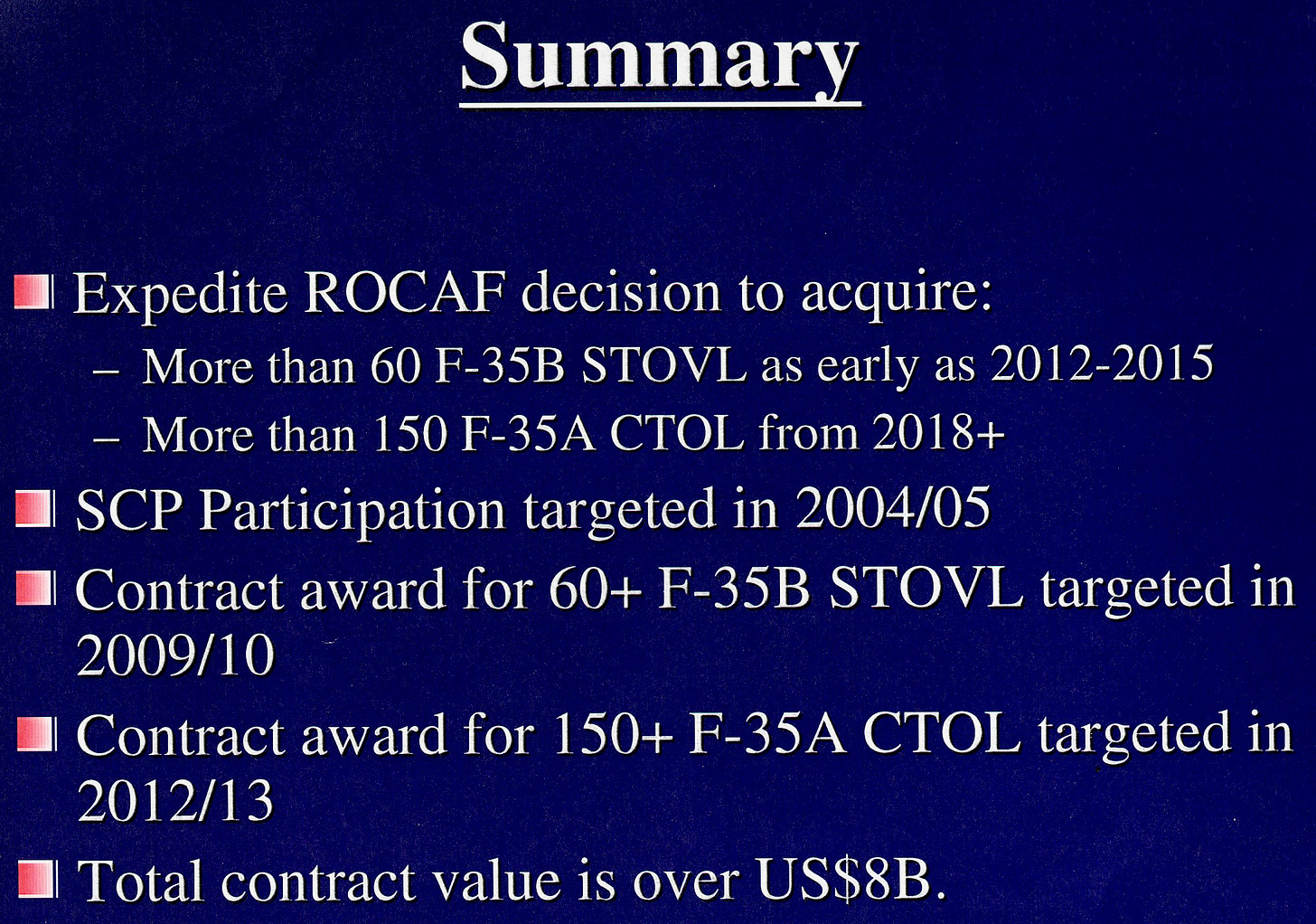
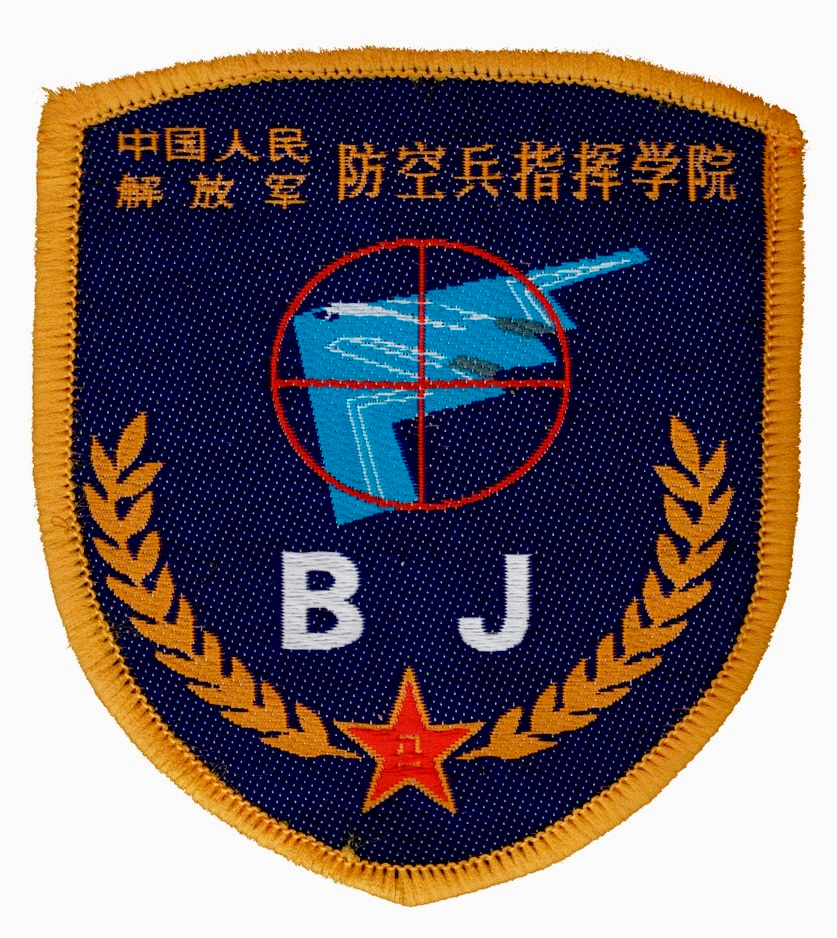
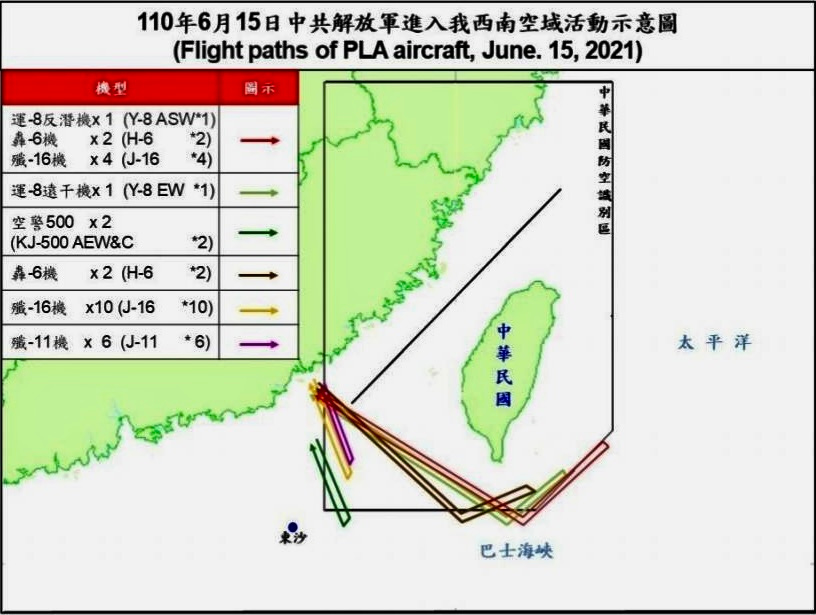
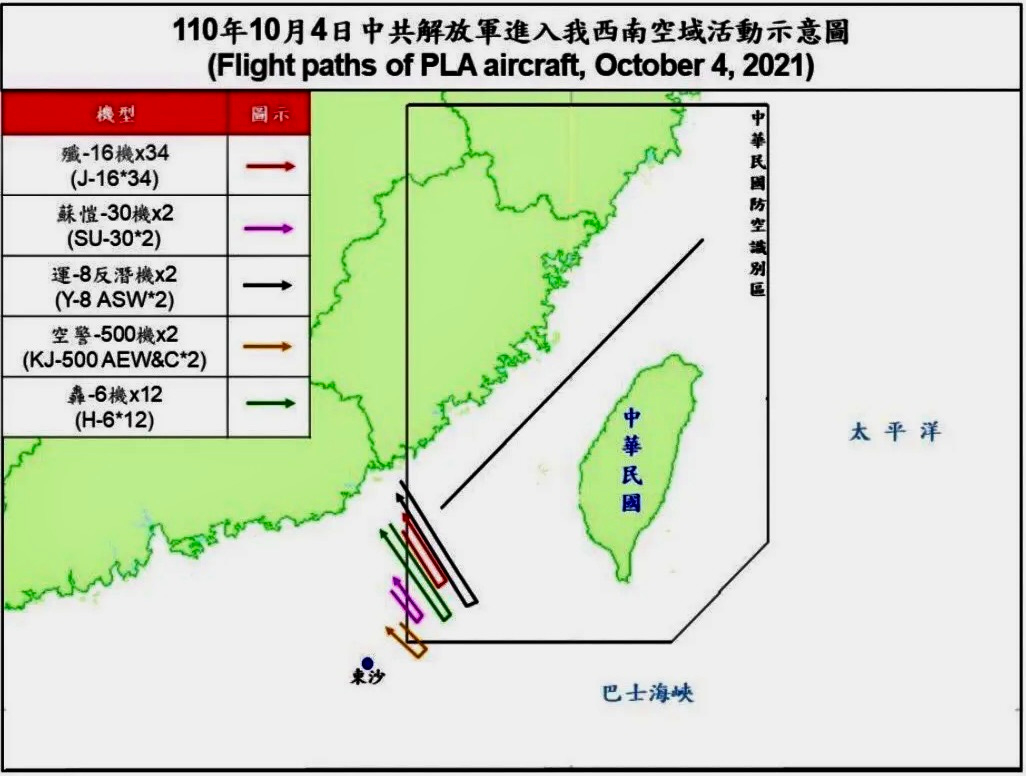
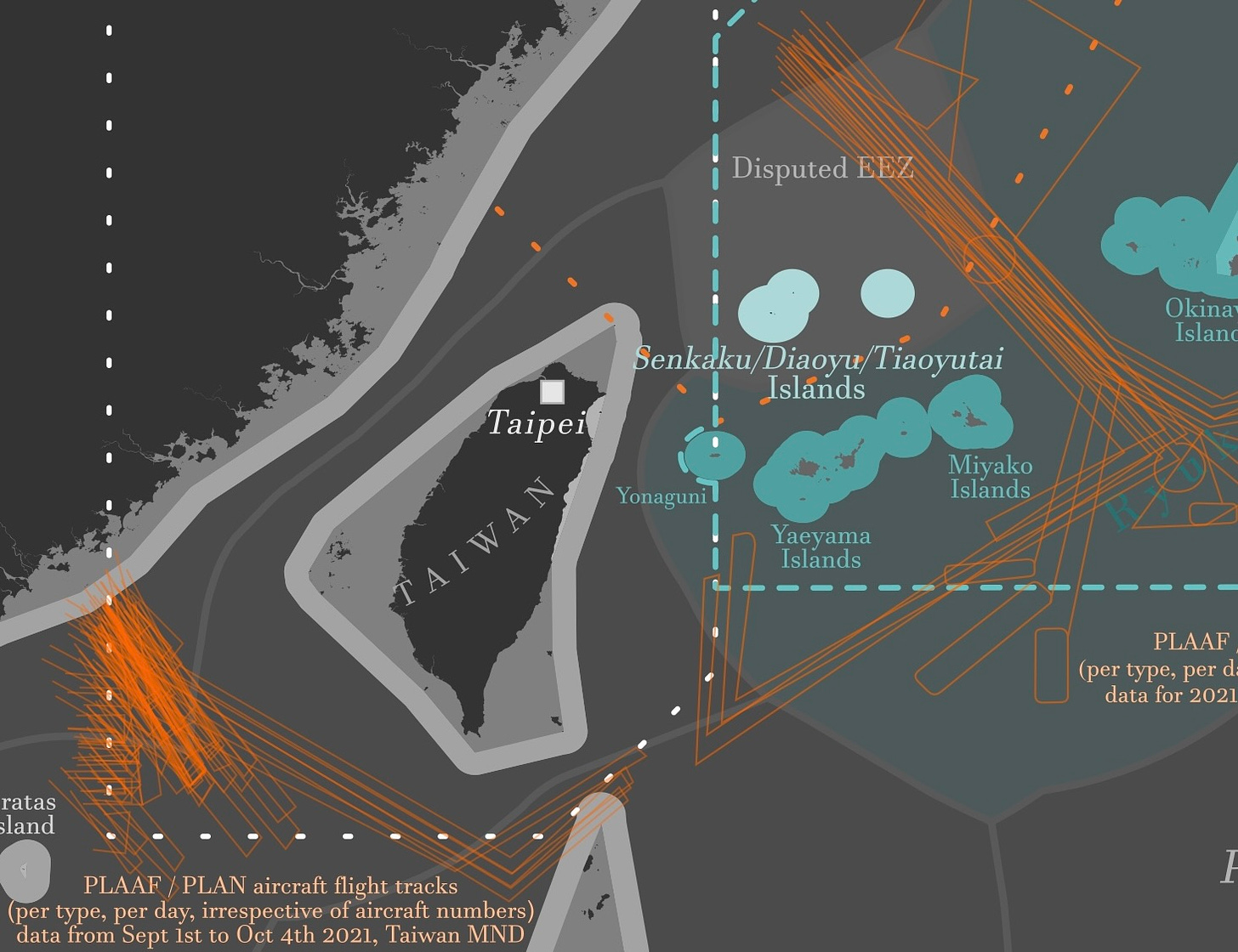

Big adiz even contains mainland China